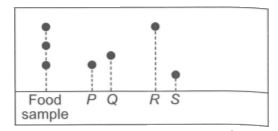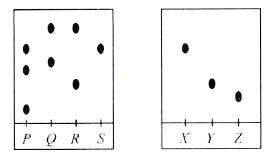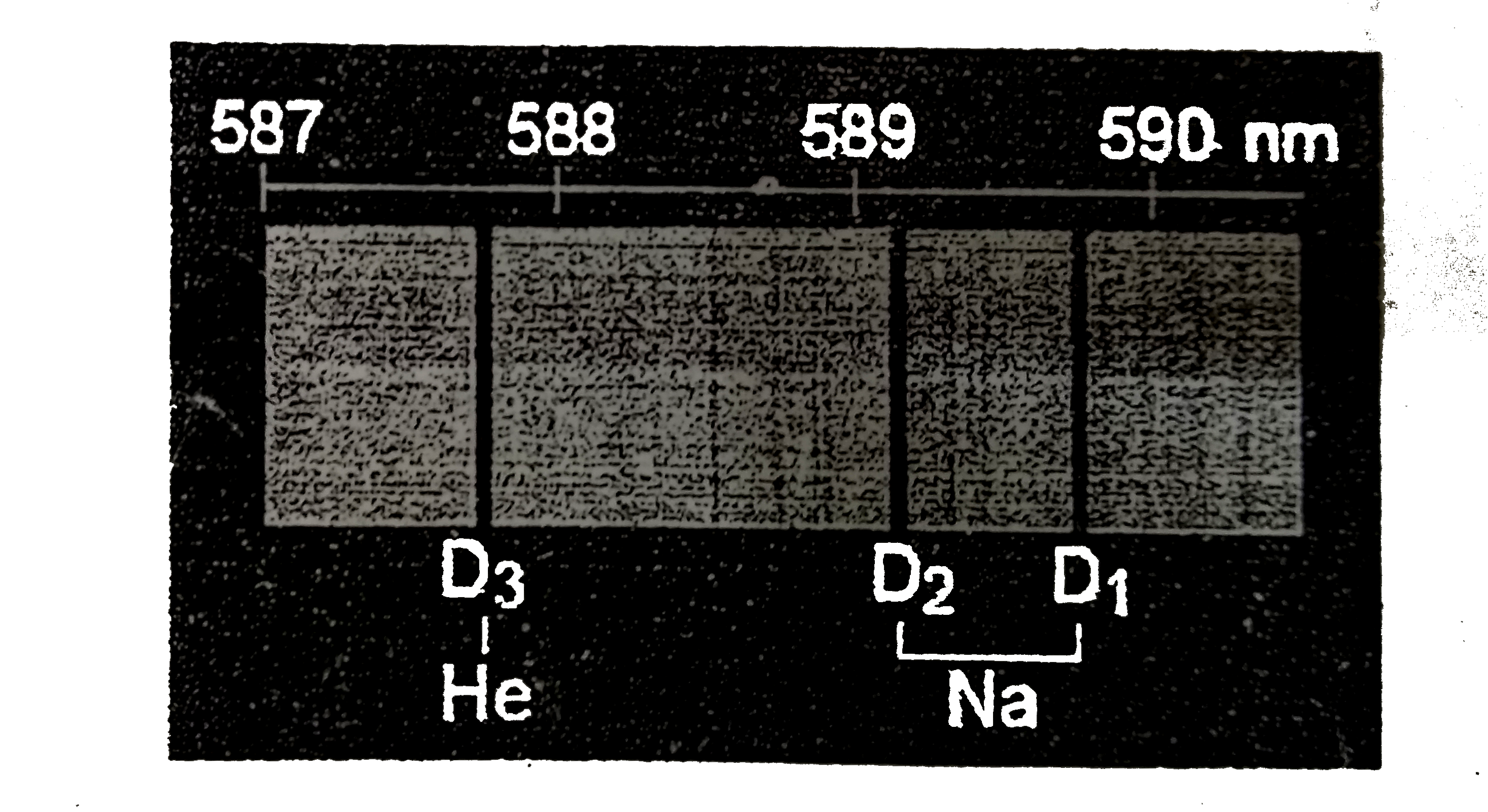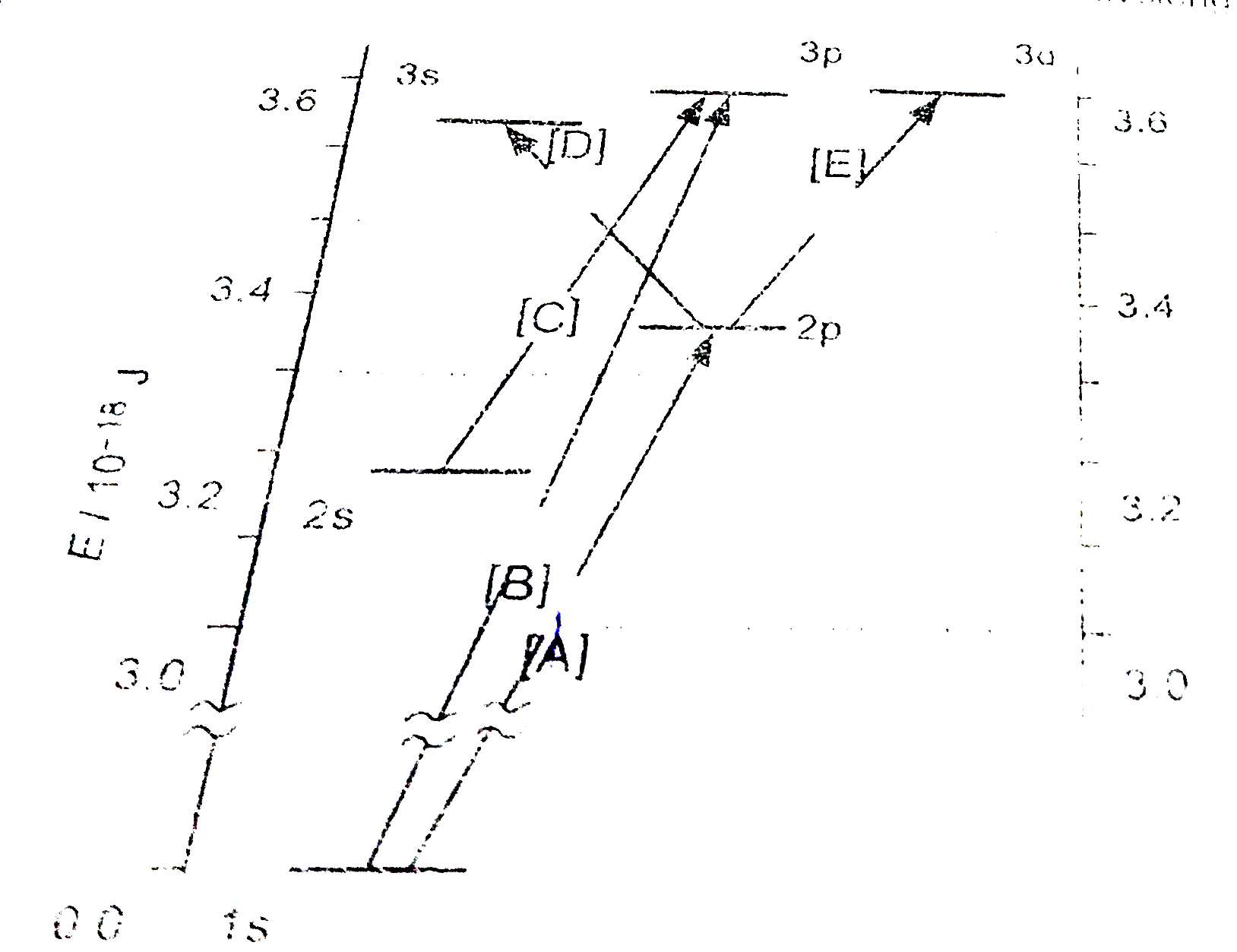Protein extract from a food sample was digested into amino acids and its components were separated by paper chromatography. The chromatogram obtained is shown as:

Which of the labelled components (P1-P5) are found in the protein extract?
P2 and P3
P3 and P4
P1 and P2
P1 and P3
The correct Answer is:D
Step by step video, text & image solution for Protein extract from a food sample was digested into amino acids and its components were separated by paper chromatography. The chromatogram obtained is shown as: Which of the labelled components (P1-P5) are found in the protein extract? by Chemistry experts to help you in doubts & scoring excellent marks in Class 9 exams.
Updated on:21/07/2023Topper's Solved these Questions
Similar Questions
A food sample was tested for the presence of components P, Q, R and S and the following chromatogram was obtained.

The components not present in food sample are
View SolutionTwo particles were projected one by one with the same initial velocity from the same point on level ground. They follow the same parabolic trajectory and are found to be in the same horizontal level, separated by a distance of 1m,2s after the second partice was projected. Assume that the horizontal component of their velocities is 0.5ms−1. Find
(a) the horizontal range of the parabolic path.
(b) the maximum height for the parabolic path.
View Solution
Knowledge Check
Four samples P, Q, R and S were analysed using paper chromatography to check the presence of three different additives X, Y and Z. The final chromatograms are shown as

Read the following statements carefully.
I. P contains three components out of which one is X II. S contains only one component which is X. III. Q contains two components which are X and Z. IV. R contains two components out of which one is Y. The correct statements areAII and IVBI and IIICI, II and IVDall of theseConsider the following statements each with one or two balnks.
(i) The bile duct and the pancreatic duct open together into the duodenum as the (1) which is guarded by a sphincter called the (2)
(ii) (3) is a proteolytic enzyme found in gastric juice of infanta which hleps in the digestion of milk proteins.
(iii) Fatty acids and glycerol being insoluble, cannot be absorbed into the blood. They are first incorporated into small droplets called (4) which move into the intestinal mucose. They are re-formed into very small protein coated fat globules called the very samll protein coated fat globules called the (5) which are transported into the lymph vessels (lacteals ) in the villi.
Which of the folllowing options gives the correct fill ups for the respective blanks in the above statements?A(1)-common bile duct, (2)-sphincter of Boyden, (3)-PepsinB(3) Rennin,(4)-chyme, (5)-micellesC(1)-Common hepato-pancreatic duct, (2)-sphincter of Oddi, (4)-micelles, (5)-chylomicronsD(3)-Casein,(4)-chylomicrons,(5)-micellesIn 1894, Lord Rayleigh reported that the mass of chemically prepared nitrogen was different from that of nitrogen extracted from the atmosphere, as shown in Tables 1 and 2. Latter, this difference was attributed to the presence of argon in atmospheric nitrogen. The masses of gases were mearsured by using a glass vessel with a known volume under atmospheric pressure (1.013×105Pa).
∣∣ ∣ ∣ ∣ ∣ ∣ ∣∣From nitric oxide2.3001gFrom nitrous oxide2.2990gFrom amonium nitrite purified at a red heat2.2987gFrom urea2.2985gFrom ammonium nitrite purified in the cold2.2987gMean2.2990g∣∣ ∣ ∣ ∣ ∣ ∣ ∣∣
∣∣ ∣ ∣ ∣∣O2was removed by hot copper(1892)2.3103gO2was removed by hot iron(1893)2.3100gO2wasremovedbyferroushydrate(1894)2.3102gMean2.3102g∣∣ ∣ ∣ ∣∣
Ramsay and cleve discovered helium in cleveite (a mineral consiting of uranium oxide and oxides of lead, thorium, and rare earths, an impure variety of uraninite) independently and virtually simultaneously in 1895. The gas extracted from the rock showed a unique spectroscopic line at around 588 nm (indicated by D3 in Figure 1), which was fist observed in the spectrum of solar prominence during a total eclipse in 1868, near the well-known D1 and D2 lines of sodium.

Which––––––– equation explains the occurrence of argon in rocks among [A] to [D] below? Mark one.
One of the strongest evidences for the monoatomicity of argon and helium is the ratio of the heat capacity under constant pressure to that at constant volume, γ=Cp/Cv, which is exactly 5/3(1.67±0.01) for a monoatomic gas. The ratio was derived from the measurement of speed of sound vs by using the following equation, where f and the frequency and wavelength of the sound, and R, T, and M denote the molar gas constant, absolute temperature, and molar mass, respectively.
vs=fλ=√γRTM
For an unknown gas sample, the wavelength of the sound was measured to be =0.116m at a frequency of f=3520Hz(Hz=s−1) and temperature of 15.0∘C and under atmospheric pressure (1.013.105Pa). The density of the gas for these conditions was measured to be 0.850±0.005kgm−3.AArF2 Ar+F2BArXe→Ar+XeC^(40)K→^(40)Ar+ epsilon//beta^(+) (electron capture//position emission)D^(126)I→^(126)Ar+beta^(-)
Given below are four jumbled sentences. Select the option that gives their correct order.S1: Plants need carbon for building the tissue of their bodies.
S6: Thus through a complex process called photosynthesis, plants receive their requirements from the soil and Sun
P: The breaking up of carbon dioxide into its components requires energy, which they derive from the Bun
Q: Plants other needs of nutrients are derived from the sail and water through their roots.
R: They derive this carbon from the carbon dioxide in the air.
S: They break up the carbon dioxide, absorb the carbon and discharge oxygen into the air for animals to breatha The proper sequence should be
View SolutionDietary fibre-found mainly in fruits, vegetables, whole grains and legumes- is probably best known for its ability to prevent or relieve constipation. But foods containing fibre can provide other health benefits as well, such as helping to maintain a healthy weight and lowering your risk of diabetes, heart disease and some types of cancer. Dietary fibre, also known as roughage or bulk, includes the parts of plant foods your body can't digest or absorb. Unlike other food components, such as fats, proteins or carbohydrates- which your body breaks down and absorbs- fibre isn't digested by your body. Instread, it passes relatively intact through your stomach, small intestine and colon and out of your body.
Which is the path through which fibres pass in the digestive tract?
View SolutionRead the following extract and answer the questions given below
We used to walk down the snow sprinkled trail,
May be catch a glimpse of a bobcat, playing eye tricks with its tail.
Now there is only one type of bobcat we see
The one that is fur free, clearing the pavement of all debris
We used to walk through a footpath in a forest of pine
The smell intoxicating our lungs and mind.
Now the only smell to be found comes from plastic trees
Swaying on my rear-view mirror, labelled pine breeze.
Pick out the line from the extract which suggests that the pine trees were healthful.
View SolutionIn 1894, Lord Rayleigh reported that the mass of chemically prepared nitrogen was different from that of nitrogen extracted from the atmosphere, as shown in Tables 1 and 2. Latter, this difference was attributed to the presence of argon in atmospheric nitrogen. The masses of gases were mearsured by using a glass vessel with a known volume under atmospheric pressure (1.013×105Pa).
∣∣ ∣ ∣ ∣ ∣ ∣ ∣∣From nitric oxide2.3001gFrom nitrous oxide2.2990gFrom amonium nitrite purified at a red heat2.2987gFrom urea2.2985gFrom ammonium nitrite purified in the cold2.2987gMean2.2990g∣∣ ∣ ∣ ∣ ∣ ∣ ∣∣
∣∣ ∣ ∣ ∣∣O2was removed by hot copper(1892)2.3103gO2was removed by hot iron(1893)2.3100gO2wasremovedbyferroushydrate(1894)2.3102gMean2.3102g∣∣ ∣ ∣ ∣∣
Ramsay and cleve discovered helium in cleveite (a mineral consiting of uranium oxide and oxides of lead, thorium, and rare earths, an impure variety of uraninite) independently and virtually simultaneously in 1895. The gas extracted from the rock showed a unique spectroscopic line at around 588 nm (indicated by D3 in Figure 1), which was fist observed in the spectrum of solar prominence during a total eclipse in 1868, near the well-known D1 and D2 lines of sodium.

Calca––te––––––––– the energy E[J] of a photon with the wavelength of the D3 line of helium shown in Figure 1

Figure 2. Energy diagram of atomic orbitals of helium when an electron resides in the 1s orbital.
Figure 2 shows an energy diagram of the atomic orbitals of helium. The arrows indicate the ''allowed'' transitions according to the spectroscopic principle.
View SolutionFill in the blanks:
(i) Liver separates excess of sugar from the blood and stores it in its cells as glycogen by a process called ……… It is aided by the ……..,a parncreatic hormone.
(ii) During days of food shortage, the stored glycogen is changed into glucose and added to the blood stream by the process called .......... It is aided by.......... another pancreatic hormone.
(iii) Excess of amino acids/fat from very high protein/fat diet are also changed into glycogen by a process called......... Liver also converts excess glucose and amino acids into fats by aa process called.......
(iv) In the liver, excess or unnecessary amino acids are broken down, their amino radical separating as..... and carbon chain changing into a......
(v) The process of breakdown of excess amino acid in the liver is called ..... It forms ammonia which is immediately convered into relatively harmless.....
View Solution